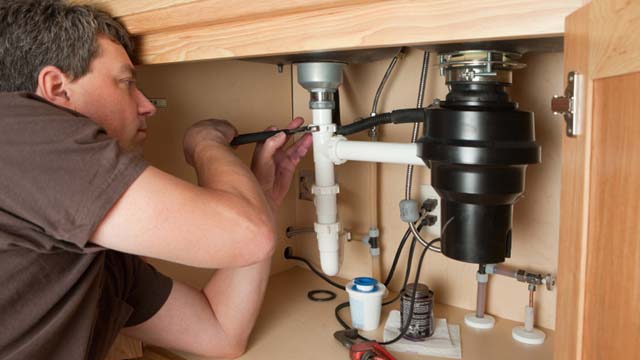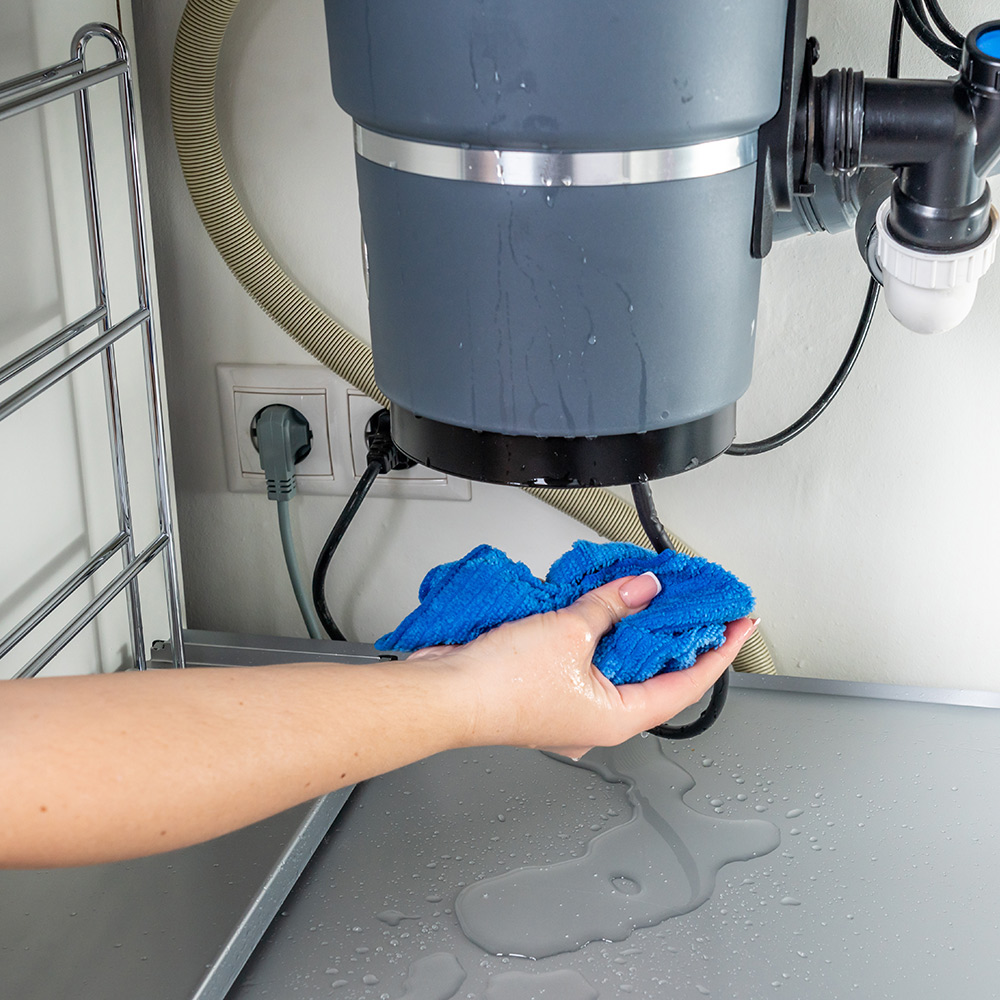This post down below relating to Why Is My Garbage Disposal Leaking From the Bottom? is fairly intriguing. You should give it a look.

Garbage disposals are necessary kitchen home appliances that help in getting rid of food waste effectively. Nevertheless, a dripping garbage disposal can be a frustrating and messy trouble to take care of. The good news is, several leaks can be taken care of easily with a couple of simple steps. In this short article, we will certainly talk about just how to deal with a dripping waste disposal unit effectively.
Introduction
Garbage disposals are mounted under cooking area sinks and are developed to shred food waste into smaller sized items, permitting it to pass through the plumbing system easily. While these devices are normally reliable, leakages can occur with time due to deterioration, loose connections, or damage to the system.
Step-by-Step Overview to Fixing a Leaking Waste Disposal Unit
Switch off the Power
Prior to trying any repairs, ensure that the power to the garbage disposal system is shut off to prevent the danger of electric shock.
Locate the Leakage
Identify the exact area of the leak and identify the cause
Tighten Links
Use a wrench to tighten up any kind of loosened links between the disposal unit and the plumbing system.
Replace Seals or Gaskets
If the leakage results from worn seals or gaskets, remove the old components and replace them with new ones.
Patching Fractures or Openings
For cracks or holes in the disposal unit, use epoxy or a suitable patching product to seal the broken area.
Recognizing the Resource of the Leak
Before attempting to repair a leaking waste disposal unit, it is important to identify the source of the leakage. This can usually be done via visual inspection or by performing simple examinations.
Visual Inspection
Evaluate the waste disposal unit unit meticulously for any type of indicators of water leakage. Pay attention to areas around seals, gaskets, and link factors.
Evaluating for Leakages
One way to check for leakages is by running water through the disposal device and checking for any type of visible indicators of leakage.
Typical Reasons For Leakages in Trash Disposals
Worn Seals and Gaskets
Seals and gaskets play a critical role in stopping water from leaking out of the waste disposal unit. Gradually, these parts can weaken, leading to leaks around the disposal device.
Loose Connections
The links between the garbage disposal and the pipes system can come to be loosened gradually, triggering water to leak out throughout procedure.
Fractures or Openings in the Disposal Unit
Physical damage to the garbage disposal, such as cracks or openings in the real estate, can additionally lead to leakages.
Devices and Materials Needed for Taking Care Of a Leaking Garbage Disposal
Prior to beginning the repair service procedure, collect the essential tools and products, consisting of a screwdriver, adjustable wrench, plumbing professional's putty, replacement seals or gaskets, and epoxy or patching material for fixing fractures or holes.
Evaluating the Garbage Disposal After Repair Service
As soon as the fixing is complete, test the garbage disposal by running water through it to guarantee that the leakage has actually been resolved.
Preventive Maintenance Tips to Prevent Future Leaks
To prevent future leaks, it is essential to perform regular upkeep on your waste disposal unit. This includes keeping it clean, staying clear of putting non-food items or difficult items down the disposal, and occasionally checking for leaks or other problems.
Verdict
In conclusion, dealing with a dripping garbage disposal is a fairly uncomplicated process that can be completed with fundamental devices and materials. By complying with the actions described in this post and exercising preventative upkeep, you can maintain your waste disposal unit in good working problem and stay clear of pricey repairs in the future.
HERE’S HOW TO FIX YOUR GARBAGE DISPOSAL
WHAT TO DO IF SOMETHING IS STUCK IN YOUR GARBAGE DISPOSAL
If the impeller won’t turn, there’s probably something stuck in the disposal. It could be a steak bone or peach pit, although plumbers report pulling all sorts of inappropriate objects out of disposals, such as bottle caps or aluminum foil. Make sure power to the disposal is off, and look inside to see if you can see the source of the jam.
Never stick your fingers in a disposal. Pull out anything you see with tongs or pliers.
If the disposal still won’t work, it may be time to call a plumber or consider buying a new disposal. GEM Plumbing & Heating is here for all of your garbage disposal needs.
WHAT TO DO IF YOUR GARBAGE DISPOSAL DRAIN IS CLOGGED
Take everything out from underneath your sink and put a bucket or other container under your disposal to catch any water that drains out. Disconnect your disposal from the power supply. If it’s plugged into a wall outlet, unplug it. If it’s hardwired into an electrical box, go to the electrical panel and turn off the breaker for the disposal. Pour ¼ cup of baking soda into the drain, followed by ½ cup of white vinegar. Give the solution a few minutes to fizz and do its work. Look into the disposal with a flashlight to see if you can see an object that might be causing the clog. If you see it, remove it using tongs or pliers. MORE TIPS ON DEALING WITH A CLOGGED GARBAGE DISPOSAL
Never use drain cleaner in a garbage disposal. It can damage the plastic parts inside the disposal. You can also be splashed with the caustic liquid while working to clear the clog. Beware! Never stick your fingers into a garbage disposal. Trust us — not a good idea. In many instances, your dishwasher drains through your garbage disposal. This allows the disposal to grind any large food particles that may be drained out of your dishwasher. There are some jurisdictions, however, where the plumbing code prohibits such a connection. WHAT TO DO WHEN YOUR DISHWASHER DRAINS THROUGH THE DISPOSAL
Run some water in the sink so your plunger has at least a ½-inch of water to create a seal and plunge vigorously up and down several times. You may need to repeat this several times. Run hot water down the drain to clear any residue that remains.

Do you really like reading up on Why Is ? Create a short review directly below. We would be delighted to listen to your suggestions about this blog posting. We are looking forward that you visit us again later on. Enjoyed reading our posting? Please share it. Help others check it out. Many thanks for going through it.
This Website